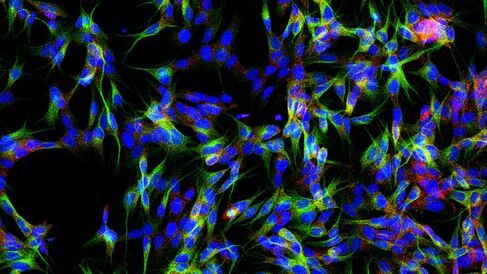
Researchers have developed a method that could drastically accelerate the search for new drugs to treat mental health disorders such as schizophrenia.
Psychiatric disorders are increasingly recognised as disorders of the whole body
Sabine Bahn
Mental health disorders are the leading cause of disability worldwide, accounting for 31% of total years lived with disability. While our understanding of the biology behind these disorders has increased, no new neuropsychiatric drugs with improved treatment effects have been developed in the last few decades, and most existing treatments were found through luck.
This is mainly because doctors can’t take brain tissue samples from patients in the same way that they are able to do a biopsy on a cancer tumour elsewhere in the body for example, so it’s difficult for researchers to understand exactly what to target when designing new neuropsychiatric drugs.
Now, a team of scientists led by the University of Cambridge have shown that live blood cells from patients with mental health disorders can be used to identify potential targets for drug discovery research. Their results are reported in the journal Science Advances.
Human blood cells contain many receptors and proteins involved in signalling that are also found in our central nervous system and have been shown to be linked to neuropsychiatric disorders. Previous research has shown that there is a strong link between cells in our blood and the way our central nervous system operates, for example patients suffering from bacterial infections often show depressive-like symptoms.
This makes blood cells an ideal environment in which to test potential new drugs. There is also significant evidence that using primary cells from patients in drug development leads to a higher success rate for effective drug discovery.
“Psychiatric disorders are increasingly recognised as disorders of the whole body,” said Professor Sabine Bahn from Cambridge’s Department of Chemical Engineering and Biotechnology, who leads the research group behind the work. “This study proposes a shift in the field to directly explore live cellular function as a model for disease.”
The team also confirmed that the activity of new drugs was shared between blood cells and brain cells, by testing drug compounds on human nerve cells.
“This is the most in-depth, functional exploration of primary psychiatric patient tissue to date and has the potential to substantially accelerate drug discovery and personalised medicine for neuropsychiatric disorders and other human diseases,” said lead author Dr Santiago Lago, who developed the technology with Dr Jakub Tomasik.
The research was funded in part by the Stanley Medical Research Institute, the Engineering and Physical Sciences Research Council and the European Union.
To read the full article, please visit the University of Cambridge website.
